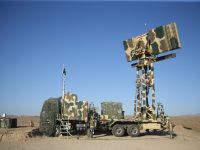ALBAWABA - The United States military has declared plans to develop a new nuclear bomb that is more than 20 times more powerful than the one dropped on Hiroshima, Japan, in August 1945.
According to a Defense Department data sheet, the new weapon, known as the B61-13, would have a blast yield comparable to the B61-7 bomb's 360 kilotons of TNT. The atomic bomb dropped on Hiroshima had a blast yield of 15 kilotons of TNT, making the new bomb 24 times more powerful.
Assistant Secretary of Defense for Space Policy John Plumb said in a Friday statement: "Today’s announcement is reflective of a changing security environment and growing threats from potential adversaries. The United States has a responsibility to continue to assess and field the capabilities we need to credibly deter and, if necessary, respond to strategic attacks, and assure our allies".
According to the Federation of American Scientists, Russia holds 5,977 nuclear warheads, whereas the US has 5,428.
The B61-13 would be constructed using reused warheads from older bombs and would be geared to attack "harder and large-area military targets," according to the Pentagon.
It would also "include the modern, safety, security, and accuracy features" of the B61-12 from the Obama administration.
According to the Congressional Budget Office, "the nation's current nuclear forces are reaching the end of their service life, and some delivery systems may not be capable of having their service life extended further".
Hiroshima and Nagasaki bombing
On 6 and 9 August 1945, the United States detonated two atomic bombs over the Japanese cities of Hiroshima and Nagasaki respectively. The bombings killed between 129,000 and 226,000 people, most of whom were civilians.
These targets were chosen because they were large urban areas that also held militarily significant facilities. On 6 August, a Little Boy bomb was dropped on Hiroshima. Three days later, a Fat Man bomb was dropped on Nagasaki.
Over the next two to four months, the effects of the atomic bombings killed between 90,000 and 146,000 people in Hiroshima and 60,000 and 80,000 people in Nagasaki; roughly half occurred on the first day.







